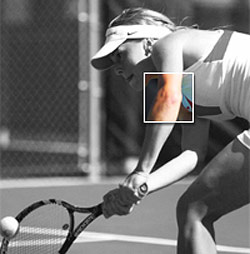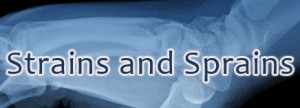 Tennis elbow is an overuse and muscle strain injury caused by the repeated contraction of the forearm muscles that you use to straighten and raise your hand and wrist and affects 1% to 3% of the overall population. Repeated motion and stress to the tissue can cause inflammation or even a series of tiny tears in the tendons that attach the forearm muscles to the bony “knob” at the outside of your elbow, and the results can be painful.
Tennis elbow is an overuse and muscle strain injury caused by the repeated contraction of the forearm muscles that you use to straighten and raise your hand and wrist and affects 1% to 3% of the overall population. Repeated motion and stress to the tissue can cause inflammation or even a series of tiny tears in the tendons that attach the forearm muscles to the bony “knob” at the outside of your elbow, and the results can be painful.
Many common activities other than playing tennis, can cause this painful condition, including gardening, working around the house, or any activity that involves repetitive twisting of the wrist. Pain and weakness caused by tennis elbow can make it difficult to do simple everyday activities such as shake hands, use a doorknob, or hold a coffee cup.
If you think you have tennis elbow, it’s always best to consult a healthcare provider to get an expert opinion. Luckily, up to 90% of cases can be remedied by nonsurgical treatments, and symptoms usually diminish within four to six weeks after receiving appropriate treatment.
For immediate relief, often just resting and applying ice may help relieve symptoms, and anti-inflammatory medications can help reduce pain. Braces or wrist splints may also help to relieve the symptoms of tennis elbow along with specific range of motion exercises.
The type of treatment prescribed for tennis elbow will depend on several factors, including age, overall health, medical history, and severity of pain. The goals of treatment are to reduce pain or inflammation, promote healing, and decrease stress and abuse on the injured elbow.
Physiotherapy & Chiropractic treatments can help treat tennis elbow; using a combination of Ultrasound, Class IV Laser, Shockwave Therapy and Graston Instruments to reduce inflammation. Specific exercises to stretch and strengthen the muscles of your forearm will help to strengthen those muscle and keep the chance of tennis elbow from re-occurring.
Your practitioner will also discuss changes you need to make to your work environment, sport technique or sports equipment that you are currently using.



